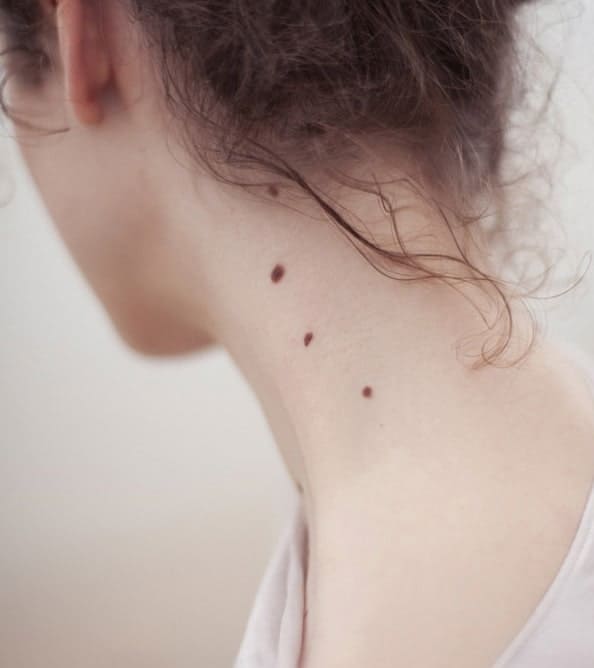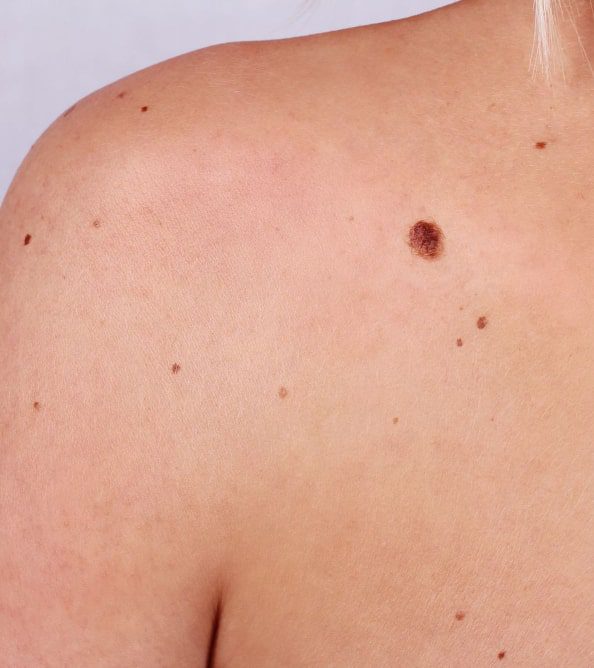Mole & Warts - Know About Disease, Treatments, & Cost in Jaipur at Skinaa Clinic
Moles & Wart Removal Treatment at Skinaa Clinic
Moles and warts are common skin conditions that, while generally harmless, often require medical attention for both health and aesthetic reasons.
Moles, or nevi, are small, coloured spots on the skin made up primarily of melanocytes, cells that produce pigment. Most people have some moles, and they can vary in size, shape, and colour. Moles can appear anywhere on the skin and are usually benign. However, changes in their size, shape, colour, or texture can be indicators of skin cancer, necessitating professional evaluation.
Warts are skin growths caused by the human papillomavirus (HPV). They can develop on any part of the body but are most commonly found on hands, feet, and sometimes the face. Warts are typically skin-coloured and rough to the touch, but they can be smooth, flat, and dark. While warts are generally harmless and often disappear on their own, they can be bothersome, contagious, and, in some cases, painful.
A Skin Tag is a small, soft protrusion of skin, often found on the neck, underarms, eyelids, groin, or chest. Common in areas of skin friction, they can sometimes be irritating or bleed. More prevalent in adults, particularly those with diabetes or obesity, skin tags are benign and can be easily removed by a dermatologist.
Treatment options for both moles, warts and Skin Tag vary depending on their type, size, and location, as well as the patient’s preference and health. Moles can be removed through surgical excision, laser treatment, or cryotherapy (freezing). Wart treatments include cryotherapy, salicylic acid preparations, laser therapy, and in some cases, minor surgical procedures.
It’s important to consult with a healthcare provider for an accurate diagnosis and appropriate treatment plan for both moles and warts, especially if there are changes in appearance or any concern about skin cancer.
At Skinaa Clinic, we understand that Moles & Warts are more than just a skin condition; it can be a significant source of distress, impacting self-esteem and daily life and our approach focuses on personalized treatments to effectively manage and reduce Moles & Warts.
Mole Removal Treatments
Moles can be removed using several methods:
Excision: This involves cutting out the mole with surgical scissors, often under local anesthesia. Deeper moles might require stitches, potentially leaving a temporary scar.
Shave Removal: Ideal for smaller moles, this technique uses a scalpel to shave the mole after numbing the area. It usually leaves a pinkish mark that fades over time.
Freezing (Cryosurgery): Small, benign moles can be frozen off using liquid nitrogen. This may cause temporary blistering.
Laser Treatment: Suitable for small, non-cancerous moles, especially on the face and ears. Laser energy breaks down the mole’s cells. This method can address multiple moles simultaneously.
Wart Removal Treatments
Various procedures can eliminate warts:
Cryotherapy: Liquid nitrogen freezes the wart. This may not reach deeper layers and often causes blistering, with the wart falling off as dead skin.
Cantharidin: A blister beetle extract applied to the wart, causing it to lift from the skin.
Medication: Injections of bleomycin to kill the virus, or immunotherapy drugs like imiquimod to boost immune response against the virus.
Salicylic Acid: Topical creams with salicylic acid dissolve wart tissue over time.
Surgery: For resistant warts, surgical removal or destruction with freezing or an electric needle is an option.
Laser Surgery: Utilizes laser energy to destroy wart tissue.
Skin Tag Removal Treatments
Skin tags, though harmless, can be removed:
Cryotherapy: Freezing the skin tag with liquid nitrogen.
Surgical Removal: Cutting off the skin tag using surgical tools.
Electrosurgery: High-frequency electrical waves burn and remove the skin tag.
Laser Removal: CO2 laser burns the base of the skin tag, offering a quick, painless, and scar-free solution.


FAQs
Why is it Important to Visit a Dermatologist for Mole Removal?
Visiting dermatologists for all your skin problems including wart and mole removal should always be a patient’s preferred choice. Because the way a skin doctor can diagnosis your skin-related problem and prescribe medicine accordingly none another person can do.
More Info on Mole Removal Solution at Skinaa Clinic
Development of warts or moles on the skin is very common in men and women both. Where warts are actually a type of a disease, so removing them is always necessary. On the other hand, moles are just spots (and not actually a disease). If they are affecting your beauty or look adversely, then you can opt to remove them:
Why Laser for Warts is the Most-Preferred Treatment Today?
To remove warts, Pulse Dye Lasers are often used. The beam of the laser heats up the inner part of a wart to a point that it falls off. The laser does not damage the skin or any tissue.
Is Wart Removal Painful?
Many patients say that the process of wart removal does not cause much pain. Usually, it feels like a rubber band exfoliating against the skin.
How Much Time Does It take to Heal after a Laser Wart or Mole Removal?
After the laser treatment, the wart can be healed in 1 weeks. The doctor would give you some medicine and ointment to apply to the place according to your skin type.
Rooms
Cured
In India
Practo
Become a Premium Skinaa Member
Apply for a Premium Membership at Skinaa Clinic and Avail Stunning Off on
Consultation Fees, Lots of Free Procedures, Get Preferred Support and Feel
Extraordinarily Exclusive.


